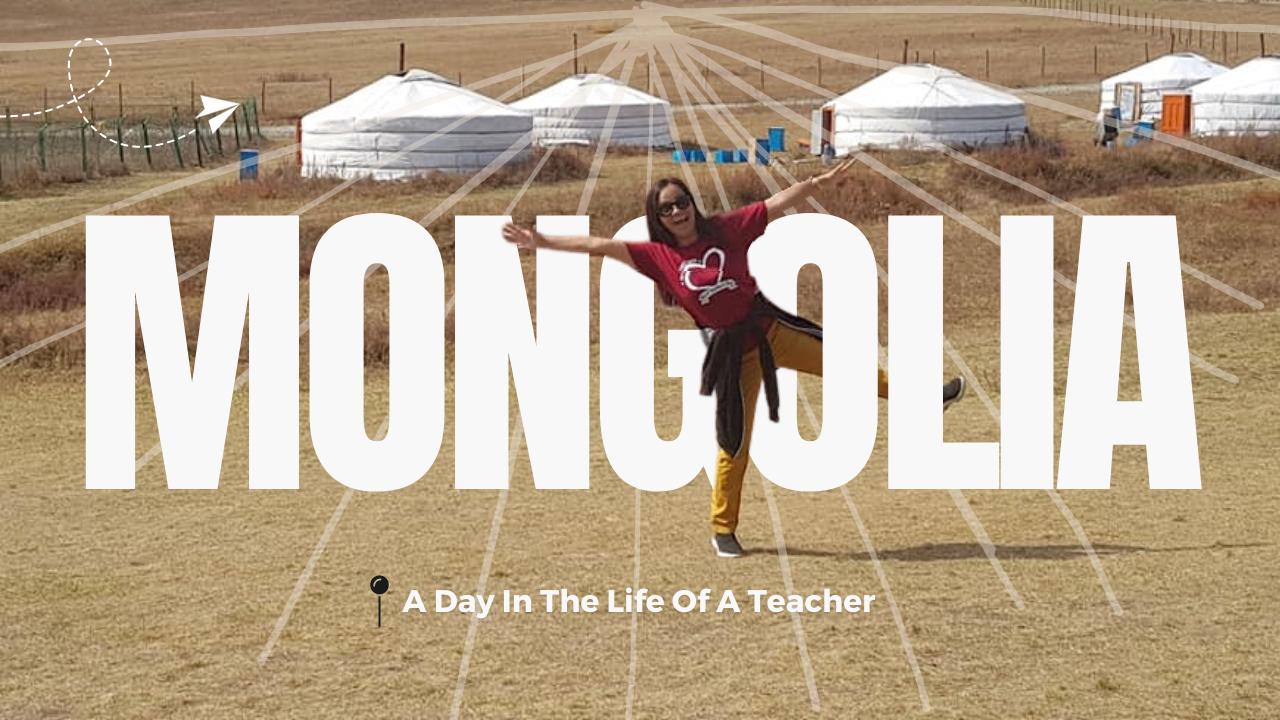Have you ever worked abroad as a teacher? If yes, you might add Mongolia as one of your potential teaching destinations, as it welcomes international teachers with open arms. Geographically, Mongolia is a landlocked country sandwiched between Russia in the north and China in the south.
Culturally speaking, Mongolians are very proud of their ancestry and traditions that can be traced way before Genghis Khan’s era. It has evolved from a nomadic country into a mixed modern Mongolia that is open to all kinds of international exchanges across industries, especially in the fields of education and business.
When it comes to learning the English language, Mongolians have a soft spot for English Language teachers as the former have learned to accept their need to master the language if they want to study, work or simply travel abroad.
Becoming an English Teacher in Mongolia
Teach Away is one of the best platforms for looking for job placements all over the world. Job openings are sorted depending on the positions (either teaching or administrative) you are looking for. Through these job posts, you can either apply directly to the schools with vacancies or course your job application through recruitment agents.
From my personal experience, I have noticed that primary English speaker-applicants have more edge compared to non-primary English-speaking applicants, especially when applying in countries like Japan, China, and the Middle East.
Primarily English-speaking applicants are mostly those from the United States, United Kingdom, Australia, Canada, New Zealand, and other Commonwealth countries. Big international schools hire teachers from these countries, especially for English Language Arts and English Literature subjects.
On the other hand, non-primary English speakers (like me!) should not lose hope nor give up on getting that promising job abroad. There are ways how to negate this almost “discriminative” elimination when it comes to job placements.
Having a TEFL Certification Helps!
One of these is having a valid IELTS (academic) or TOEFL test results that can boost your resume or CV.
Another is having a recognized TESOL or TEFL certification that can enhance your teaching qualifications or sometimes can replace the need for an education degree.
Taking up postgraduate courses or having a master’s or doctor’s degree related to your teaching subject can also help your career.
In my 15 years of teaching experience, I have learned that finishing short courses (online or on-campus) can give your potential employer a good impression that you are open to new learning and skills which can enhance your future employability.
Work Visas
Moreover, Mongolia has no restrictions regarding getting a work visa. You can enter the country as a tourist anytime and look for jobs. Commonly, you can find IB or Cambridge schools in Ulaanbaatar, the country’s capital, or nearby provinces.
Once hired, your employer can immediately sponsor you for a work visa or permit, depending on your contract agreements, without you leaving the country.
Salary and Benefits at Mongolian International Schools
Regarding benefits and compensation, Mongolian international schools offer competitive salary rates (dollar equivalent) to expatriates and provide a variety of freebies such as accommodation, work visas, annual roundtrip flights, transportation allowance, food allowance, and other bonuses!
What to Expect in Classrooms
Mongolian classrooms are not so different from what you are used to as a teacher. In international schools, students are more varied as a mixture of cultures is prevalent. A classroom can house a mix of Mongolian, Indian, Korean, Chinese, Kazakh, Turkish, and other nationalities.
You can expect some English-speaking students and also no English at all. Still, students look up to foreign national teachers as an authority in learning, especially in a foreign language like English. Mathematics is a common favorite subject among Mongolians, while business-related degrees are the usual target pathway for graduating students.
Teaching the English language in a Cambridge school in Mongolia is one of the best things that has happened in my teaching career so far. It is a memorable experience I will treasure dearly as it gives me new insights as a teacher and an educator.
Life of an English Teacher in Mongolia
My Mongolian adventure is not complete without immersing myself in living with everything Mongolian. Here are some snippets of what I have experienced so far: the good and the bad.
Surviving the Mongolian Winter
Winter is really exciting for people who have never experienced it before. Like anyone from a tropical country, I was looking forward to the winter wonderland experience.
However, Mongolian winter is something that you cannot prepare for. Normal winter days can have a temperature of -20 to -35 degrees Celsius, while the worst days can go down to -40 to -55 degrees Celsius in the countryside.
Comparatively, the Mongolian climate is very dry, so there’s less snow on the roads than there is on mountaintops. Still, the risk of having your vehicle slipping and sliding down that inclined road is very real.
Fewer vehicles will be on the road during winter days, so most people just walk to get things done, like grocery shopping. Imagine lugging heavy groceries with a blizzard on your face for 2 to 3 kilometers! My natural sun-loving body begs for warmth during this period. Thinking of sunny beaches helps a little bit until the next cold air slams your eyes and nostrils.
Struggling With Mongolian Names
The Mongolian language is unique in its own way, with its flowy script that is somehow similar or comparable to Japanese, Chinese, Korean, and Arabic scripts. The most common is the Cyrillic alphabet which has a major influence on the modern Mongolian language. Try pronouncing the name Genghis Khan.
You’re correct for the first name but wrong for the last name.
Why? In Mongolian phonetics, Khan is pronounced as \hAn\, not \k•hAn\. Most Mongolian names have the diphthong KH in them. The key is not to pronounce the letter K, only the letter H. So, practice saying names like Kherlen \her•len\, Khuslen \hoos•len\, and Khukhnyam \hooh•nyam\.
Aside from the sounds, Mongolian names can be very long indeed. Bilgundalai \bilgoon•dal•ai\ and Nomin-Erdene \nomin•er•deen\ may be a mouthful for foreigners but for Mongolians; these are just typically common names.
Mongolian last names or surnames are commonly the names of the father. Thus, Bilgundalai Tamir \tA•mir\ and Nomin-Erdene Tamir are usually not siblings even though they have the same surnames.
To clarify who is who, they add another name to the registry, which is known as a clan name. In addition, married women do not take up the last name of their husbands, so you may meet married couples who will be introduced with different surnames.
Living With the Mongolian Diet
Mongolian cuisine is mostly associated with barbecue globally. This may be due to the common staple, which is meat. Tsagaan-Sar, or the Mongolian Lunar New Year, is the most celebrated holiday in the country, with a week’s worth of festivities and visiting relatives and/or friends.
Horse, camel, buffalo, cow, chicken, or any kind of red or white meat can be seen on Mongolian tables during this time. Another thing is the traditional fermented horse milk, which foreigners should take as less as possible (especially if it’s your first time) as it can make you feel drunk or sick after downing a cup or two.
Moreover, from a Filipino perspective, Mongolian food is a bit bland as their cuisine has less sodium (which is actually healthy!) and spices. But then, Mongolians have the sweetest tooth, as chocolates overflow no matter what the occasion is. You can expect to buy all kinds of chocolates and chocolate-flavored snacks in the groceries, small shops, and even in the wet market!
In addition, though Mongolia is part of Asia, this is a country where rice is not the center of every meal. Any Asian will be shocked by this news as rice is expensive here and mostly eaten as a side dish. Instead of rice, potatoes take the center stage in every meal and every dish here.
Aside from potatoes, most of the fruits and vegetables are imported from nearby countries like South Korea, China, and Russia. There are imported tropical fruits available in the supermarkets but expect their prices to be as expensive as gasoline and diesel.
Touring the Capital and the Countryside
Ulaanbaatar, also spelled Ulan Bator, is the largest city in Mongolia. It has railroads and airports that connect to China and Russia.
It is the main industrial center as most of the production consumer goods are found here, such as garments and footwear factories, food processing plants, vehicle-repair shops, cement and brickworks, and other business industries. Shopping centers are also found around the city.
Once you land at Chinggis Khan International Airport, you may notice that Ulaanbaatar is divided into two kinds of lifestyle: the modern and the traditional. You can see numerous housing complexes and apartment-styled houses. They’re everywhere, while others continue living in the traditional ger or yurt houses.
These white tent-like houses sprout here and there, typical to the nomad Mongolians. Though you may also see one or two gers inside a picketed fence with a modern house. Mongolians clearly know how to live in both worlds.
Once you leave the capital, prepare yourself for a steppe land adventure with numerous hikes as national parks abound the nearby vicinities such as Terelj and Altai Tavan Bogd. It is also worth visiting the fabled city of Karakorum and the home of great khans, Orkhon Valley.
Gobi Desert is also a popular spot for both tourists and locals. Tourists flock to the area for an off-road and a bit of wildlife experience, while locals use the area as grazing fields for their ever-numerous goats and sheep. Crossing animals is common in the countryside, and vehicle drivers must patiently endure the long wait.
Camel and horseback riding are pretty common sights in these parts, too.
The Mongolian steppes are not only the home of land animals. Some Mongolians have started to introduce falconry as part of their tourist attractions. Eagle hunting is a traditional falconry that is still being practiced by some nomadic tribes. Mongolians as young as ten years old carry a small golden eagle or a gray falcon attached to their arms. Training usually takes 3 to 4 years for both master and bird.
Would you consider teaching abroad in Mongolia?
Overall, Mongolia is the next best teaching destination as it can offer both a competitive job and a unique adventure at the same time. Single individuals or families can take on what a fresh start in Mongolia has to offer.
You can save financially once you work here with the simple lifestyle (depends on one’s preferences, of course!) the country can provide.
On the other hand, you can depend on the power of mountainous hikes to distract you from the hassle and bustle of the city. A balanced lifestyle is what I have learned from the ever-blue sky of Mongolia.
Are you ready to take on this journey? Let’s go.



